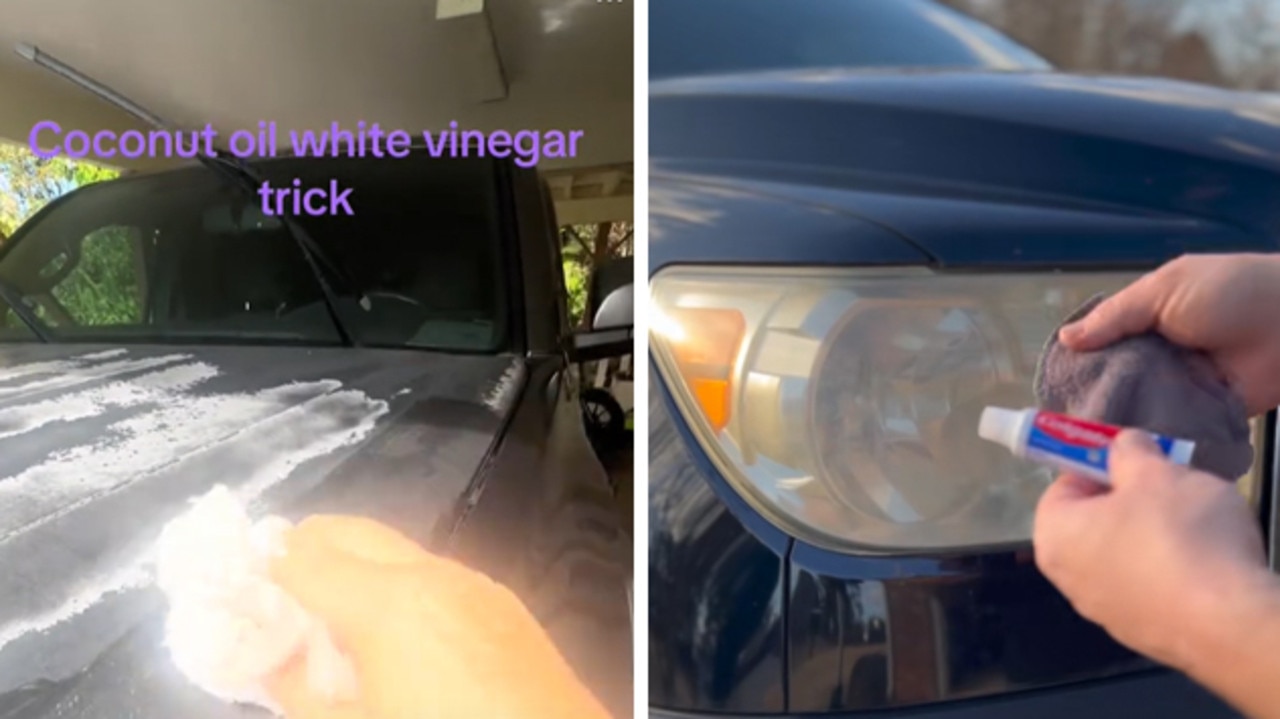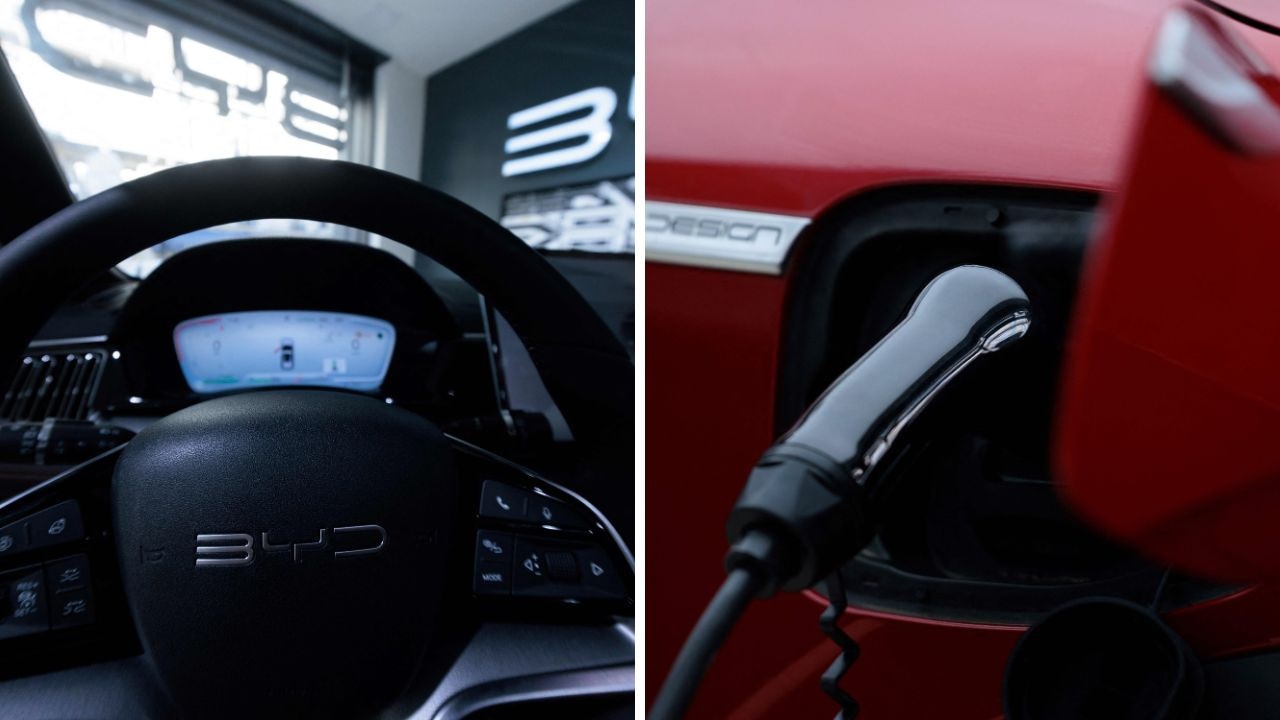Ford Everest v Isuzu MU-X v Toyota Fortuner comparison test
These three ute-based adventure machines are put through their paces to find out which is king on and off the road. SEE THE WINNER.
Car Advice
Don't miss out on the headlines from Car Advice. Followed categories will be added to My News.
Our love of the great outdoors has driven a boom in seven-seat off-roaders based on one-tonne utes.
Three of the most popular, Ford’s Everest, Isuzu’s MU-X and Toyota’s Fortuner appeal to buyers’ sense of adventure by delivering rugged off-road prowess, formidable towing ability and family friendliness. But which does it best?
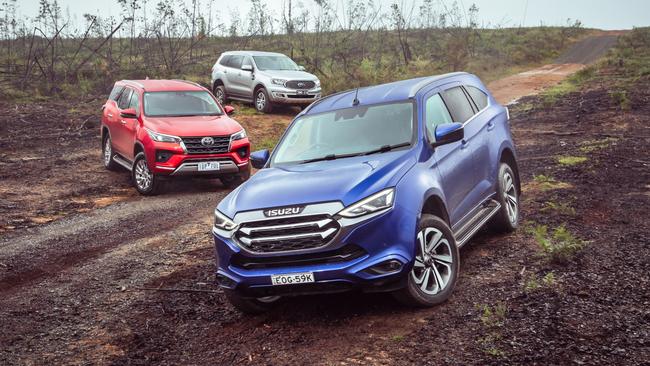
ISUZU MU-X LS-T
Sharp styling makes it easy to pick the Isuzu MU-X as the newest model, helped by suave 20-inch alloys.
Its modern cabin has a 9-inch touchscreen, electronic parking brake, wireless Apple CarPlay and a front centre airbag you won’t find in the Ford or Toyota.
It has a steering wheel that adjusts for both rake and reach, but loses ground with a flat and firm driver’s seat and less generous rear legroom.
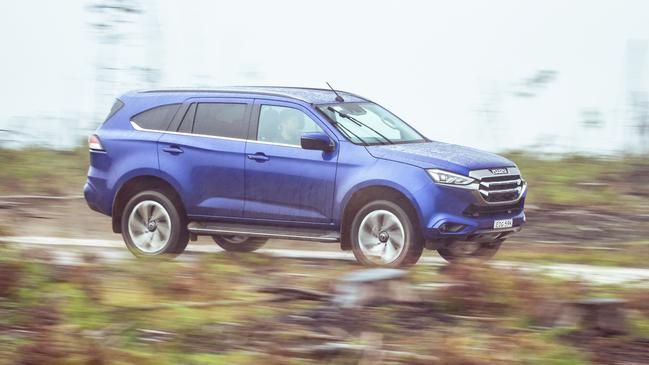
The MU-X is the only car here rated to tow 3500 kilograms (as opposed to 3100kg) and the largest boot makes it a practical pick.
Normally priced from about $71,000 drive-away, the top-end MU-X LS-T is currently $65,990 drive-away, making it the cheapest here.
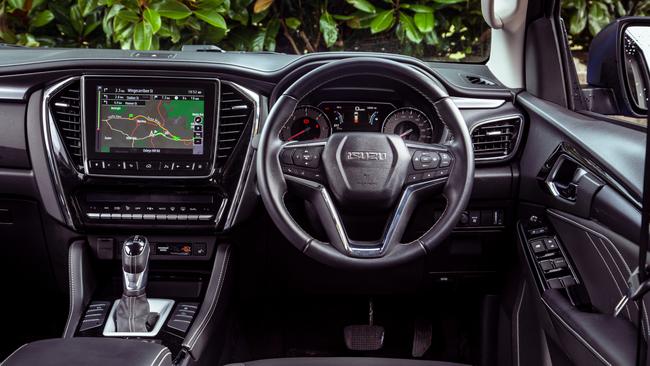
It trumps the Ford and Toyota’s five-year, unlimited-kilometre warranties with a six-year, 150,000 kilometre guarantee. Servicing is $2315 for five years.
The MU-X has soft suspension that isolates occupants from bigger bumps but feels soggy at speed, accentuating its size.
That sense of heft is magnified by a motor that uses the most fuel to produce the least power here – the 3.0-litre, 140kW/450Nm unit isn’t particularly impressive.
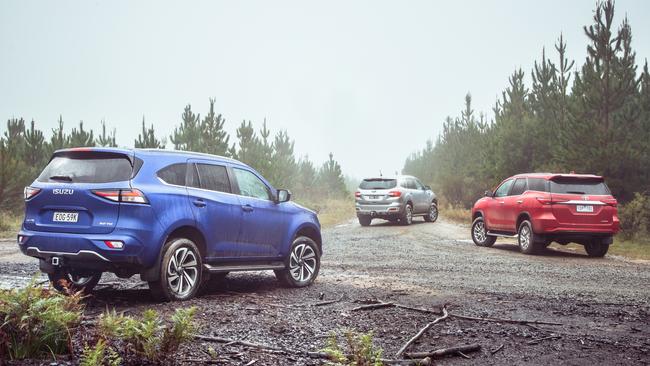
FORD EVEREST TREND
The oldest car here might well have been named the “Evergreen”, such is its enduring appeal.
A midlife update brought a bi-turbo 2.0-litre engine that uses the least fuel (7.0L/100km of diesel) to make the most power (157kW and 500Nm). That’s impressive considering it is the heaviest car here.
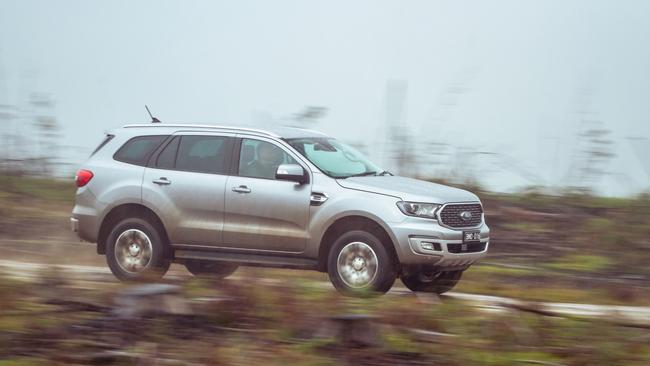
You can credit a 10-speed automatic and stop-start fuel saving system for that.
It’s also the least costly to service ($1556 for five years), even if the mid-range Everest Trend isn’t cheap at $68,000 drive-away.
Our test car misses out on luxuries such as heated seats, but otherwise largely matches the equipment of the other cars. All three models have auto emergency braking, active cruise control, lane keeping assistance, blind-spot monitoring and rear cross-traffic alert.
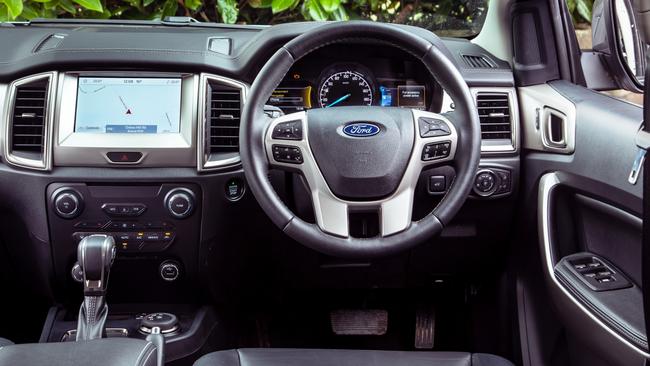
Ford’s 8-inch touchscreen is a little smaller than the Isuzu’s unit, but twin digital driver displays either side of a central speedometer work well.
Impressive body control makes the Everest the pick on the black stuff, with fast steering that makes it feel more agile than it should.
It’s also adept off-road, where the Ford feels planted and predictable, inspiring confidence in tricky situations, helped by the only multi-mode terrain management system here.
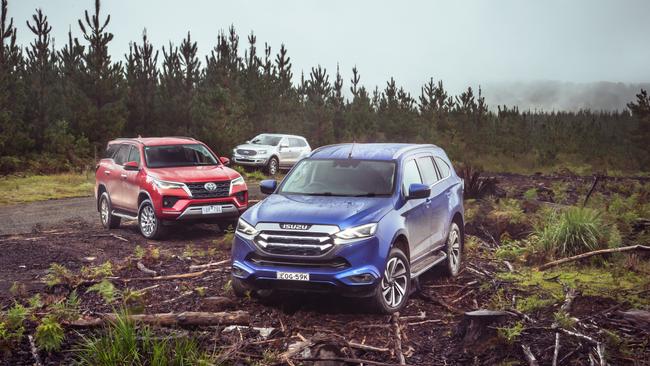
TOYOTA FORTUNER CRUSADE
The Fortuner is the black sheep in Toyota’s four-wheel-drive, SUV and ute family, which dominates the sales charts. While the HiLux, LandCruiser and RAV4 seem unstoppable, this HiLux-based wagon has not gelled with Australian families.
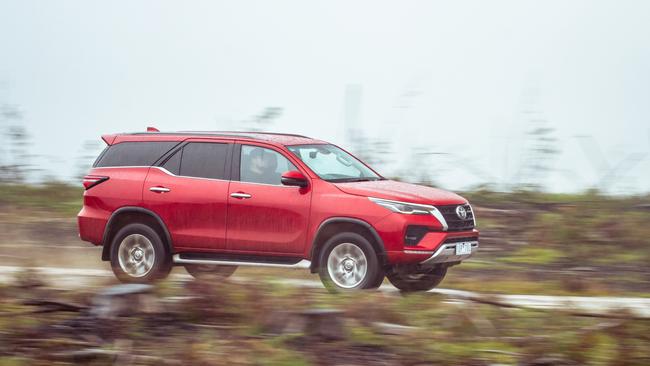
Priced from a little more than $68,000 drive-away, the Fortuner is expensive to run due to six-month service intervals that return a $3521 maintenance bill over five years. It has a good degree of equipment, including an 11-speaker JBL stereo and a useful household power point outlet, but it feels dated thanks to a fussy infotainment layout and old-school fake wood veneers.
Third-row seats that flip down from the sides rather than fold under the floor are trickier to wrangle than its rivals.
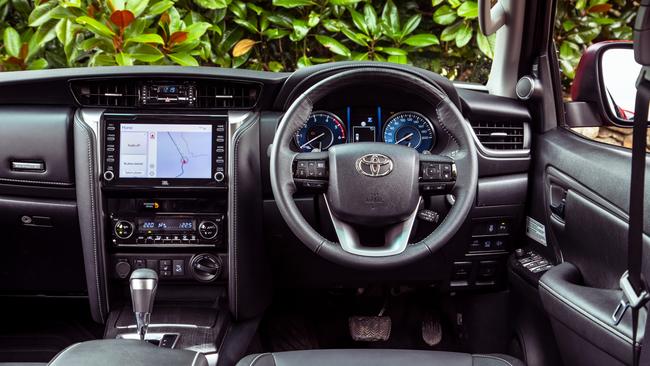
Toyota’s off-road chops are let down by the least generous ground clearance here and 700 millimetre maximum water wading depth that falls 10 centimetres short of the Ford and Isuzu.
A 2.8-litre turbo diesel engine feels punchier than its 150kW and 500Nm figures suggest, though it’s also a bit noisier than we’d prefer.
Meaty steering and stiff suspension make the Fortuner easy to place off-road. But it fell down on tarmac, juddering over broken surfaces that didn’t trouble rivals.
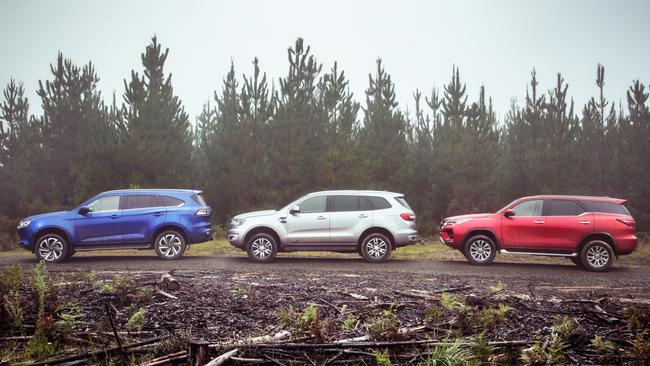
VERDICT
Our three road testers agreed that the Fortuner finished third. The MU-X is an impressive machine, particularly if your kids don’t need a lot of legroom, but the Ford Everest is the most complete package, despite the fact a new one is due to arrive soon.
FORD EVEREST TREND VITALS
Price: About $68,000 drive-away
Engine: 2.0-litre 4-cyl turbo diesel, 157kW and 500Nm
Warranty/servicing: 5-year, unlimited km/$1556 for 5 years
Safety: 7 airbags, auto emergency braking, active cruise control, lane keep assist, blind-spot monitoring, rear cross-traffic alert
Thirst: 7.0L/100km
Boot: 249 litres
Spare: Full-size
ISUZU MU-X LS-T VITALS
Price: $65,990 drive-away
Engine: 3.0-litre 4-cyl turbo diesel, 140kW and 450Nm
Warranty/servicing: 6-year, 150,000km/$2315 for 5 years
Safety: 8 airbags, auto emergency braking, active cruise control, lane keep assist, blind-spot monitoring, rear cross-traffic alert
Thirst: 8.3L/100km
Boot: 311 litres
Spare: Full-size
TOYOTA FORTUNER CRUSADE VITALS
Price: About $68,000 drive-away
Engine: 2.8-litre 4-cyl turbo diesel, 150kW and 500Nm
Warranty/servicing: 5-year, unlimited km/$3521 for 5 years
Safety: 7 airbags, auto emergency braking, active cruise control, lane keep assist, blind-spot monitoring, rear cross-traffic alert
Thirst: 7.6L/100km
Boot: 296 litres
Spare: Full-size
More Coverage
Originally published as Ford Everest v Isuzu MU-X v Toyota Fortuner comparison test



